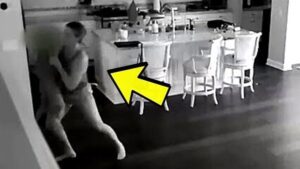Rita Wolfensohn, an elderly and blind Brooklyn woman, appears to have been living with the corpse of her son for approximately 20 years.
Wolfensohn’s sister-in-law, Josette Buchman, discovered a “completely intact” skeleton wearing jeans, socks and a shirt in a second-story bedroom that was filled with garbage and cobwebs, reports the Daily Mail.
Buchman told the New York Post that the skeleton was lying on a mattress on the floor. It looked like “some reverse ‘Psycho’ scene,” in the words of a law enforcement officer who was quoted by The Post.
Officials, who said the room smelled like rotting food but not rotting flesh, believe Wolfensohn probably did not realize she was living with her son’s remains, believing her son had moved out years ago.
Although the remains have not yet been identified, police suspect that it is Wolfenson’s son Louis, who has not been seen in 20 years. Her other son died in 2003 at the age of 38.
The case brings to mind the Collyer brothers, Homer and Langley, who were perhaps America’s most famous hoarders, as summarized by the website Mental Floss.
As with Wolfensohn, Homer Collyer was blind, and in 1947 his corpse was found in his Harlem apartment. Later, while authorities rummaged through the apartment, Langley’s corpse was also found, buried under a huge pile of newspapers. Apparently, after Langley was crushed to death, Homer perished from starvation because Langley was not alive to bring him food.
Due to the notoriety of the case, the term “Collyer Brothers Syndrome” was often used to describe the pathology that today is known simply as “hoarding.” Anxiety and Depression Society of America (ADAA) defines the illness as follows:
Hoarding is the persistent difficulty discarding or parting with possessions, regardless of their actual value…. For those who hoard, the quantity of their collected items sets them apart from other people. Commonly hoarded items may be newspapers, magazines, paper and plastic bags, cardboard boxes, photographs, household supplies, food, and clothing….
Hoarding is a disorder that may be present on its own or as a symptom of another disorder. Those most often associated with hoarding are obsessive-compulsive personality disorder (OCPD), obsessive-compulsive disorder (OCD), attention-deficit/hyperactivity disorder (ADHD), and depression.





